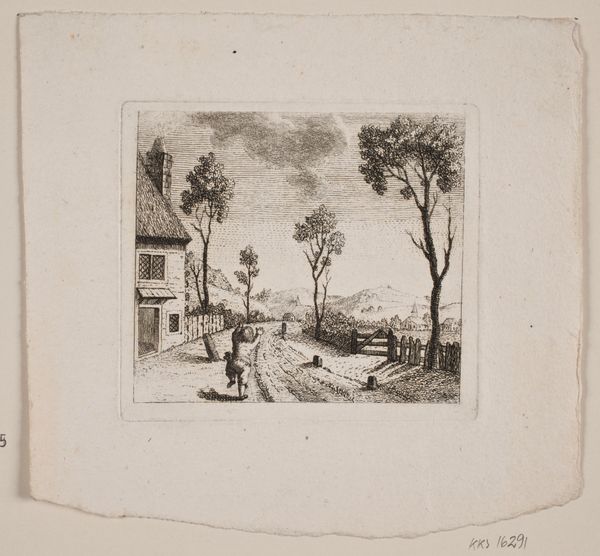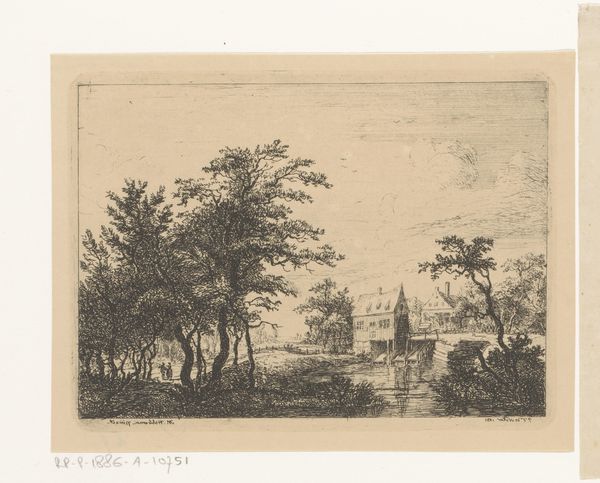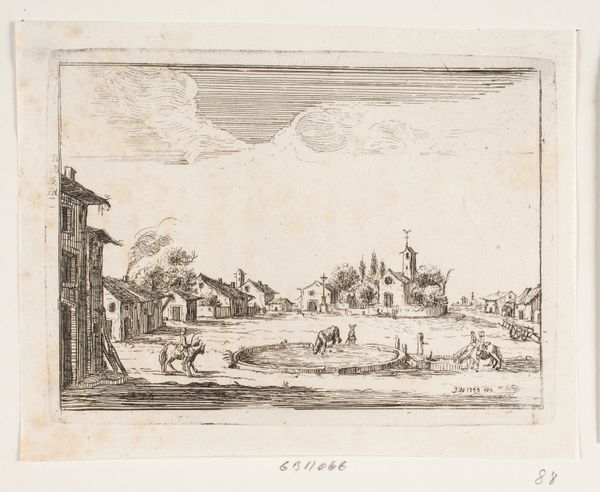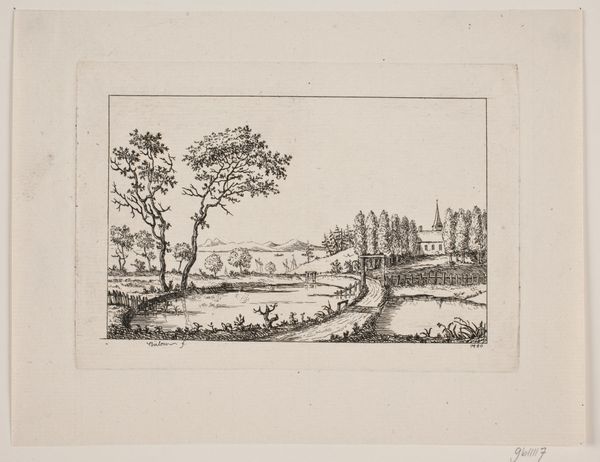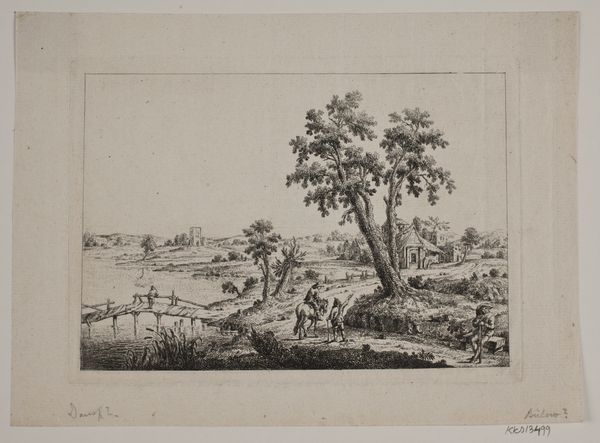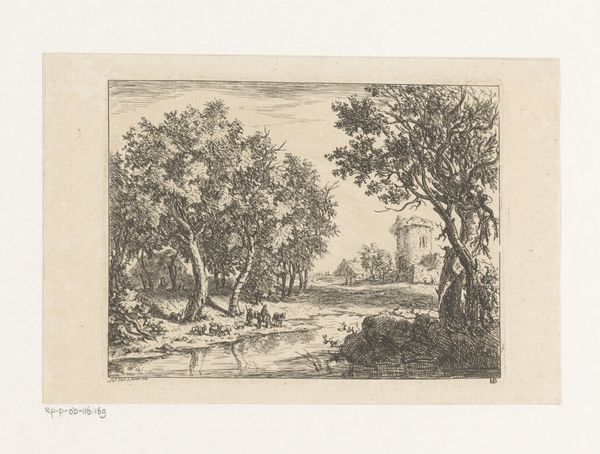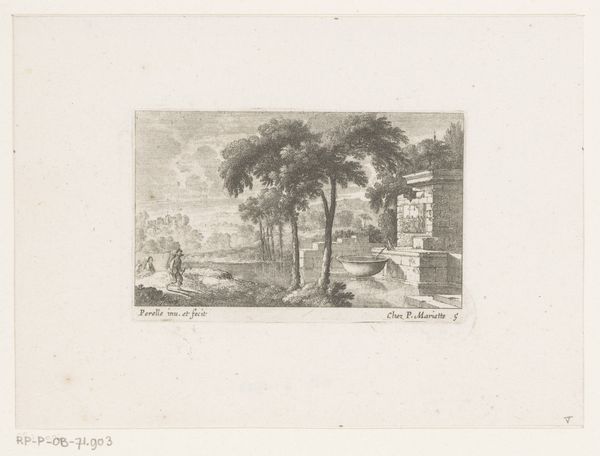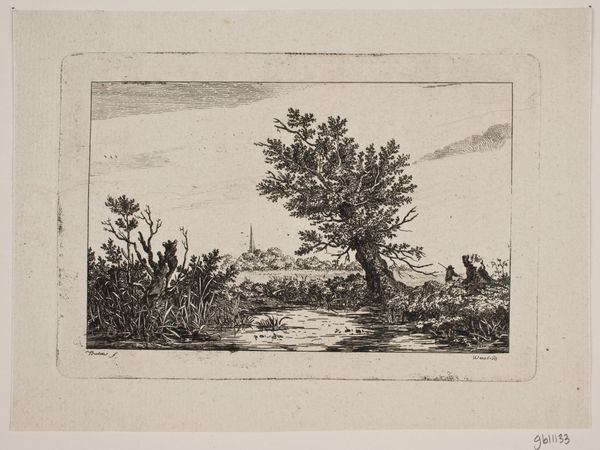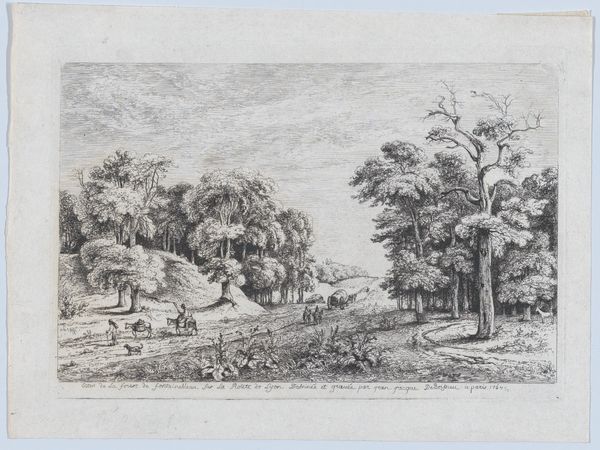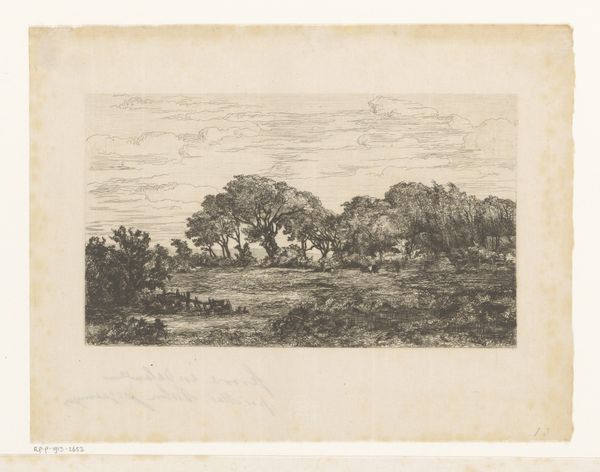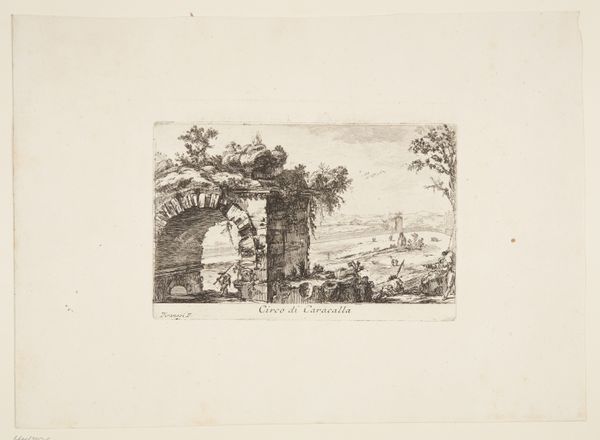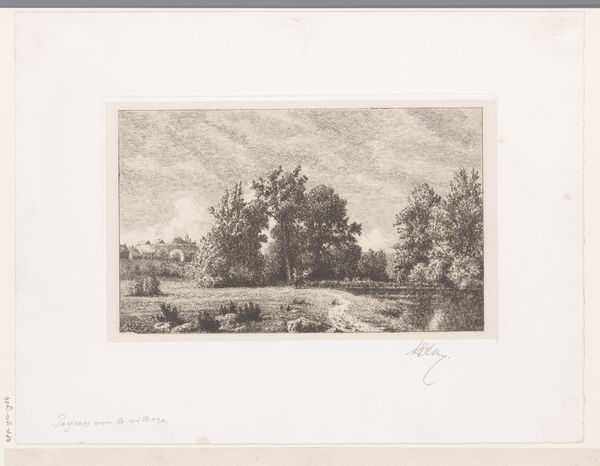
print, etching, ink
#
ink painting
# print
#
etching
#
landscape
#
etching
#
ink
#
realism
Dimensions: 48 mm (height) x 78 mm (width) (plademaal)
Johan Bulow created this small print, “Landscape with Drawbridge,” using etching, a printmaking technique, sometime in the late 18th or early 19th century. The artist would have covered a metal plate with a waxy, acid-resistant ground. Using a needle, he scratched away the ground to expose the metal, then submerged the plate in acid. The acid bites into the exposed lines, creating grooves. Ink is then applied to the plate, filling the etched lines, and the surface is wiped clean. Finally, the plate is pressed onto paper, transferring the ink and creating the print. The resulting image has a distinctive, slightly rough quality, because of the way the acid eats into the metal. Look closely, and you can see the delicate lines that define the scene. Etching was particularly well-suited to landscape imagery, as it allowed for the creation of fine details and atmospheric effects. As a multiple, prints also had a social function, allowing images to be widely circulated and consumed. Appreciating this artwork means understanding not just the final image, but also the labor-intensive process and materials that brought it into being.
Comments
No comments
Be the first to comment and join the conversation on the ultimate creative platform.

